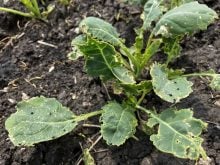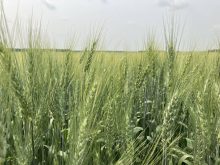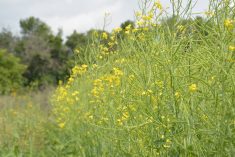SAN DIEGO, Calif. — China’s recent announcement on stricter canola import rules might have cast a pall over the immediate outlook, but the future remains bright for Canada’s canola growers.
That was the feeling coming out of the Canola Council of Canada’s annual convention: China and a host of other challenges cloud the next year or two, but the crop and the industry are likely to remain strong in the long term.
Last year was tough for canola growers with serious drought in some areas, flooding in others and frost causing widespread reseeding. However, production was the second largest in history.
“The more our industry was tested, the more we proved how strong, how resourceful and adaptable we have become,” said council president Patti Miller.
It leaves farmers and the industry “firmly on track to meet” the target of 26 million tonnes of production by 2025, or an average yield of 52 bushels per acre.
China’s recent announcement that it wants canola shipments to contain one percent or less dockage has rattled the Canadian industry because it is half of what is now accepted.
China has become Canada’s biggest canola export market, so the erection of something that could become a significant trade barrier is alarming, especially right before seeding and in an already down market.
“It’s something that causes anxiety,” acknowledged Dale Leftwich, an Esterhazy, Sask., farmer and a director with the Saskatchewan Canola Development Commission.
Read Also

Farming Smarter receives financial boost from Alberta government for potato research
Farming Smarter near Lethbridge got a boost to its research equipment, thanks to the Alberta government’s increase in funding for research associations.
Leftwich said the true worry is whether China is signalling that it’s trying to find ways to block imports, which is more serious than simply a technical change in standards.
The industry also faced a bevy of trade challenges in what Miller called “the year of asynchronous approvals.” Governments around the world tweaked regulations and standards, while companies introduced new products with varying degrees of acceptance.
The quinchlorac furor, in which the canola council advised against the use of an approved product, is the most visible example, but there were numerous other small complications with products, genetically modified crops and pesticide residues.
However, analysts at the conference seemed to see a bullish future for canola. The world is glutted with corn, wheat and soybeans, but the demand for canola is growing.
And while the collapse of the commodity boom has been hurting all commodities, many analysts feel the market is probably near the bottom from which a gradual improvement is likely following.
Canola’s relative strength was also boosted by Dow AgroScience’s announcement at the conference that it is going ahead with commercializing high-protein canola meal, which removes canola’s Achilles’ heel.
Canola meal is now a discount product, preferred only by dairy producers and seen as worse than soybean meal by most livestock industries.
However, the Dow varieties that are being introduced in the next couple of years claim to offer equivalent protein content and equal digestibility to livestock feeders.
It means canola’s oil value would no longer subsidize its meal discount.
Achieving the council’s 2025 goals depends on improved varieties, multiple zones of better in-field production and lower harvest losses, but it’s still a daunting goal.
Prairie farmers averaged 38 bu. per acre last year, so getting to 52 bu. requires a major productivity increase. Acreage can’t increase much beyond today’s levels, largely because of clubroot and prudent rotation.


















